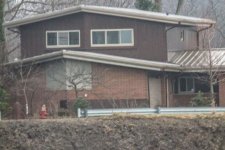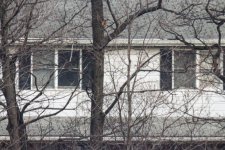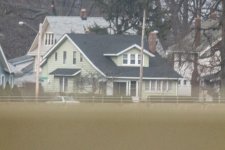-
Forum Update: We've upgraded the software to improve security, performance, and the overall experience.
👉 Read why we made the change | Support the Forum
You are using an out of date browser. It may not display this or other websites correctly.
You should upgrade or use an alternative browser.
You should upgrade or use an alternative browser.
500mm Mirror Lens Photos
- Thread starter cmort666
- Start date
Register to hide this ad
forindooruseonly
Member
What camera? Are you using a tripod? What shutter speed are you using? What aperture? You've got definite signs of camera shake, which is common with long lenses.
Typically, if using it handheld, the rule of thumb is to shoot at a shutter speed that is at least 1/(whatever your focal length is) - in your case it would be 1/500 of a second. At least. Big lenses are like big scopes. They magnify the image and the movement of the lens, so they are really sensitive to vibrations and unsteady camera holds. To compound the problem, mirror lens like that tend to be slower - f/6.3 is not a fast lens. Which means that you have to compensate with slower shutter speeds to get proper exposure, where you end up with shake. That lens will probably be sharpest at f11 or so, which makes it even more difficult.
If you are using a tripod and cable release, you need to check to make sure the camera isn't vibrating or resonating on the tripod due to wind or cable release manipulation. You can shoot lower shutter speeds on a tripod, but you have to still be careful. If you are using a tripod but not a cable release, use the self timer because mashing the button will cause some shake itself.
That lens should perform better than that, so check what you're doing and experiment a little. If you aren't using a tripod, get on fleabay and pick one up cheap. It'll make a huge difference.
Long lenses are fun, but are also a challenge. I'd like to see a fullsize image and the EXIF data, it might give a clue as to what you can do to sharpen it up some.
Typically, if using it handheld, the rule of thumb is to shoot at a shutter speed that is at least 1/(whatever your focal length is) - in your case it would be 1/500 of a second. At least. Big lenses are like big scopes. They magnify the image and the movement of the lens, so they are really sensitive to vibrations and unsteady camera holds. To compound the problem, mirror lens like that tend to be slower - f/6.3 is not a fast lens. Which means that you have to compensate with slower shutter speeds to get proper exposure, where you end up with shake. That lens will probably be sharpest at f11 or so, which makes it even more difficult.
If you are using a tripod and cable release, you need to check to make sure the camera isn't vibrating or resonating on the tripod due to wind or cable release manipulation. You can shoot lower shutter speeds on a tripod, but you have to still be careful. If you are using a tripod but not a cable release, use the self timer because mashing the button will cause some shake itself.
That lens should perform better than that, so check what you're doing and experiment a little. If you aren't using a tripod, get on fleabay and pick one up cheap. It'll make a huge difference.
Long lenses are fun, but are also a challenge. I'd like to see a fullsize image and the EXIF data, it might give a clue as to what you can do to sharpen it up some.
cmort666
Member
Those were shot at 1/500 and ISO 1600. The aperture is fixed at 6.3. It was shot on a 2sec. delay with mirror lockup. It was on a tripod. It was a cloudy day.What camera? Are you using a tripod? What shutter speed are you using? What aperture? You've got definite signs of camera shake, which is common with long lenses.
Typically, if using it handheld, the rule of thumb is to shoot at a shutter speed that is at least 1/(whatever your focal length is) - in your case it would be 1/500 of a second. At least. Big lenses are like big scopes. They magnify the image and the movement of the lens, so they are really sensitive to vibrations and unsteady camera holds. To compound the problem, mirror lens like that tend to be slower - f/6.3 is not a fast lens. Which means that you have to compensate with slower shutter speeds to get proper exposure, where you end up with shake. That lens will probably be sharpest at f11 or so, which makes it even more difficult.
If you are using a tripod and cable release, you need to check to make sure the camera isn't vibrating or resonating on the tripod due to wind or cable release manipulation. You can shoot lower shutter speeds on a tripod, but you have to still be careful. If you are using a tripod but not a cable release, use the self timer because mashing the button will cause some shake itself.
That lens should perform better than that, so check what you're doing and experiment a little. If you aren't using a tripod, get on fleabay and pick one up cheap. It'll make a huge difference.
Long lenses are fun, but are also a challenge. I'd like to see a fullsize image and the EXIF data, it might give a clue as to what you can do to sharpen it up some.
It's a mirror lens, they're known for soft images. I knew that when I bought it. I had one previously that I used to take pictures of North Korean guard posts across the DMZ for OPFOR classes.
This is a lens that you use to get images that you wouldn't otherwise get at all, not tack sharp images.
cmort666
Member
The next time I use that lens, I'll probably hang a bag full of metal parts from the center column hook for stability.
I was shooting over a concrete railing on a bridge, so I had to have all of the leg sections extended to get the shots.
I was shooting over a concrete railing on a bridge, so I had to have all of the leg sections extended to get the shots.
The next time I use that lens, I'll probably hang a bag full of metal parts from the center column hook for stability.
rather than hang a bag full of metal parts....find or make a small bean bag.....mine I made out of an old flannel shirt sleeve....filled with....well dried pinto beans.....can be used as a camera rest...and/or a soft weight placed on top of a long lens...really settles things down....
cmort666
Member
I've actually already got the bag full of metal parts. It's a bunch of dealer samples from my old boss's metal parts import business. I used it previously for the pictures of the stop sign and car. There was very little movement!.rather than hang a bag full of metal parts....find or make a small bean bag.....mine I made out of an old flannel shirt sleeve....filled with....well dried pinto beans.....can be used as a camera rest...and/or a soft weight placed on top of a long lens...really settles things down....
forindooruseonly
Member
Those were shot at 1/500 and ISO 1600. The aperture is fixed at 6.3
Forgot those were fixed aperture. Test shoot something at ISO 200 and whatever corresponding shutter speed, I'm curious as to how much difference there is at that ISO. If you are already on a tripod using the timer, more weight might help. I still think it should perform better.
THE PILGRIM
Member
Thanks for posting!
They look cloudy - low contrast.
Have you tried any bright color shots?
They look cloudy - low contrast.
Have you tried any bright color shots?
cmort666
Member
God knows what the shutter speed would be at ISO 200.Forgot those were fixed aperture. Test shoot something at ISO 200 and whatever corresponding shutter speed, I'm curious as to how much difference there is at that ISO. If you are already on a tripod using the timer, more weight might help. I still think it should perform better.
I don't think I've ever gotten a usable image at anything below ISO 400. This lens is REALLY slow and you have to make allowances for that.
I forgot to mention that I had the 2x teleconverter on it, which only makes it slower. If it had been warmer, I might have taken some comparison shots with my Promaster 70-300mm zoom. Those houses were a LONG way away. It probably means nothing to you, but those were taken from the Hilliard Ave. bridge in Rocky River, across Rocky River and the valley up into Lakewood. Combine the 1000mm with the crop factor of the APC-C T4i body, and that's a lot of magnification.
If you can, boost the contrast once the pictures get into the computer; it would probably help, although the photos look fine to me.
cmort666
Member
I did. That's standard practice with mirror lenses, since the images from current models lack contrast as shot.If you can, boost the contrast once the pictures get into the computer; it would probably help, although the photos look fine to me.
THE PILGRIM
Member
I did. That's standard practice with mirror lenses, since the images from current models lack contrast as shot.
We are spoiled out here in the West!
In the middle of the day, especially in the summer, the sun gets too ***t' and you have too much contrast!
I was trying to use a word which means very warm??
Last edited:
Dennis The B
US Veteran
The "Cat" lenses have to change the direction of the image too many times to get real clarity of images. And part of the problem is the way that pin dots of light are rendered. When they become large enough to be easily seen in the way of glare, they turn into "doughnuts" of light; not helpful at all.
The photo software available will only do so much. The image softness can be helped a bit, but the inherent low contrast, even on bright days, just can't be overcome.
I used to use a Nikkor 500mm f8, and as good quality as is their glass, it just wasn't a very good lens. Today, I use a Nikkor 200-500mm f5.6, and it shoots rings around the older lenses. Even with a 1.4x, or 2x teleconverter, I get really sharp, contrasty images.
The photo software available will only do so much. The image softness can be helped a bit, but the inherent low contrast, even on bright days, just can't be overcome.
I used to use a Nikkor 500mm f8, and as good quality as is their glass, it just wasn't a very good lens. Today, I use a Nikkor 200-500mm f5.6, and it shoots rings around the older lenses. Even with a 1.4x, or 2x teleconverter, I get really sharp, contrasty images.
LouisianaJoe
Member
This was taken with a Sigma 150-500mm f/5-6.3 Auto Focus at 500mm, f/8, 1/125 sec, ISO-100. I cropped it to make it smaller and adjusted the Histogram to get more contrast. It was on a tripod. This combination gave me a lot of detail.

This one was taken at f/10, ISO-160, 1/640 sec, 439mm. At f/10 you get a longer depth of field and that is why this bird is in focus at 208yds. The image was cropped to reduce the image size.


This one was taken at f/10, ISO-160, 1/640 sec, 439mm. At f/10 you get a longer depth of field and that is why this bird is in focus at 208yds. The image was cropped to reduce the image size.

Last edited:
cmort666
Member
Unfortunately, good lenses come at a high price.I used to use a Nikkor 500mm f8, and as good quality as is their glass, it just wasn't a very good lens. Today, I use a Nikkor 200-500mm f5.6, and it shoots rings around the older lenses. Even with a 1.4x, or 2x teleconverter, I get really sharp, contrasty images.
A decent non-mirror 500mm lens comes at a price that would buy you a couple of consumer grade AR-15s and decent scopes. The prices go up from there.
My lens and converter were $119 plus shipping. For that difference in price, I'm willing to accept some compromises.
Besides, as I said previously, I've used a 500mm mirror before. I used one in Korea to take pictures of North Korean guard posts. This is a lens to get images you wouldn't otherwise get, while accepting its limitations.
cmort666
Member
Those are nice images.This was taken with a Sigma 150-500mm f/5-6.3 Auto Focus at 500mm, f/8, 1/125 sec, ISO-100. I cropped it to make it smaller and adjusted the Histogram to get more contrast. It was on a tripod. This combination gave me a lot of detail.
You're always going to get better images with a conventional lens... if you're willing to pay the upfront price.
I have a number of Sigma lenses and a Tamron or two. They are both lower priced than camera brand lenses. The quality is good to very good, but in most cases not quite up to the more expensive lenses. Definitely good enough for me since I'm among the rankest of amateurs when it comes to photography even after 40+ years of experience.
Louisiana Joe's Sigma can usually be found for under $1000. Occasionally under $800. A very good price for its performance, but still not inexpensive. I tend to buy my lenses used from B&H or 42nd Street. I've never gotten a bad one and sometimes saved quite a bit compared to new.
Louisiana Joe's Sigma can usually be found for under $1000. Occasionally under $800. A very good price for its performance, but still not inexpensive. I tend to buy my lenses used from B&H or 42nd Street. I've never gotten a bad one and sometimes saved quite a bit compared to new.
cmort666
Member
My recently purchased Canon T4i was bought used from either B&H or Adorama (I forget which). I got a good deal on a camera in excellent condition.Louisiana Joe's Sigma can usually be found for under $1000. Occasionally under $800. A very good price for its performance, but still not inexpensive. I tend to buy my lenses used from B&H or 42nd Street. I've never gotten a bad one and sometimes saved quite a bit compared to new.
LouisianaJoe
Member
My sigma 150-500 was $769 in 2014. Now it is $849 on Amazon. I am using a Canon 70D. It is heavier than a Mirror lens and more expensive.
Since this is a manual focus lens, it is up to you to make it work. Using the 2X Teleconverter means that you are shooting at f/12.6. Try a smaller ISO and a faster shutter speed to get less grainy images. You can also post process the image to adjust the histogram to get the contrast that you want.
Since this is a manual focus lens, it is up to you to make it work. Using the 2X Teleconverter means that you are shooting at f/12.6. Try a smaller ISO and a faster shutter speed to get less grainy images. You can also post process the image to adjust the histogram to get the contrast that you want.
Last edited:
LouisianaJoe's mention of the Canon 70D got me to thinking. I got a 70D to replace a camera that didn't have enough capability. Unfortunately, the 70D had more 'capability' than I can cope with. It's not really a camera, but a computer with a lens attached. The 126 page 'basic' instruction book put me off to begin with. The complete instructions, about 400 pages of them, are on a CD. It must be said, however, hat the complete instructions also cover how to handle the images once they're in the computer. I found the camera very counter-intuitive to use, and without the instruction book in hand I couldn't do simple things like set the self-timer. I now have a Sony, and am well satisfied with it. Anyone want a 70D cheap, comes with an extra macro lens?
Similar threads
- Replies
- 0
- Views
- 399



